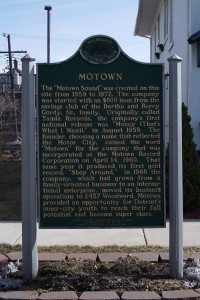I repeat: questions in a museum? At first glance, it almost seems like an oxymoron of a phrase. However, it is what Dr. K (my professor) suggests for our museum project on I-496 in his infamous blog for the course (in the post “Questions and Answers”). He suggests that instead of giving the answer, our exhibit could pose the question. I think it is a great idea. At the beginning of the course (in conjunction with discussions about the Enola Gay controversy ~ see my earlier post), we discussed the role of museums. Most of the class seemed to agree that part of the role of a museum is to promote critical thinking. Critical thinking is not possible without questions. Critical thinking can not happen if answers are simply provided to the visitors. It requires people to interact and come to their own conclusions.
Following that reasoning, if one of our goals with this exhibit is to promote critical thinking than I say why not pose a question instead of providing an answer? It should be our job as exhibit creators and researchers to come up with the material to get visitors of the museum thinking. So, perhaps instead of shaping our message around the answer we should, as Dr. K suggests, shape it around the questions we want people to think about and ask themselves as they interact with the material. Why did the interstate end up where it did? Were racial politics at work? Or was it purely economics and geography at play? Was it the best possible option? Did the positive outcomes outweigh the negative outcomes? Was this a reflection of something larger? Why learn about I-496?
This does have some obvious implications. First, what if people do not interact on a deep enough level with the material to ask any questions? On a previous visit (for a different class), a museum guide explained that most people will only spend 18 seconds on any given artifact. This means minutes on any single exhibit. Is this enough time? Can the material be presented in a way that either makes people stay longer at this exhibit or interact at a deeper level? Second, by posing a question instead of an answer, it has the obvious implication of not specifying an answer. By this I mean, people can come to any conclusion they wish. People could come to an answer different than you expected or intended. However, if people are engaging with the material, critically thinking about it, hasn’t the museum succeeded? Or is it necessary for a museum to convey a certain message and for all the visitors to learn and accept that message?
On a more specific level, I think the idea of creating the exhibit around a question works really well with ideas the design team has discussed. We have talked about having an interactive part at the end of the exhibit where people can post their reflections about the old community, exhibit, and/or other related items. If the museum poses a question then this reflection board can have particular relevance. It gives people a place to pose the other questions they have come up with and/or answers and thoughts about the issues presented. It will also help address some of the negative aspects of organizing the exhibit around a question(s) because it allows museum personnel to see what people are thinking from the exhibit. This way the museum can see if the exhibit is effectively evoking critical thinking and the conclusions it leads people to.
All in all I think it is a great idea to a least discuss. Why can’t a museum be about questions?


